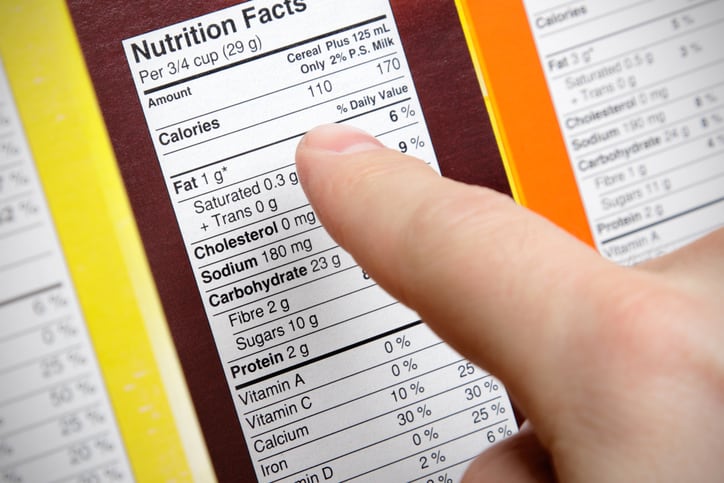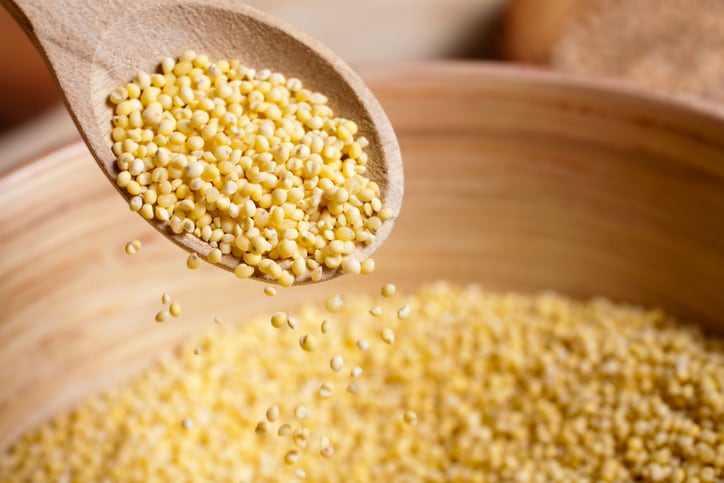Dietary fibre is important for regular laxation and reduces chronic disease risk, and the World Health Organisation recommends at least 25g of fibre daily for adults. However, fibre intake is still under in many countries worldwide. In Australia, adults were consuming only 20g of fibre daily according to Fayet-Moore et al. (2018).
Currently, the labelling of fibre content of packaged products is voluntary in Australia, unless a fibre content claim is made.
This makes it difficult for consumers to make informed food purchase decisions for policy makers to monitor trends in the fibre content of packaged foods.
So, researchers use machine learning to develop an algorithm that can predict fibre content based on commonly available nutrient information and applied this to packaged products that do not report fibre content.
Machine learning techniques have been used in areas including malnutrition screening and food item recognition, but “this is the first study to use machine learning to predict the fibre content of packaged products,” researchers wrote in Nutrients.
Dataset
For this study, researchers used the George Institute’s Australian FoodSwitch database, comprising 80,000 packaged foods and beverages that have been sold in Australia since January 2013.
Products that did not contain nutrition information panel or an ingredients list was omitted. Products such as cheese, cooking oils, honey, processed meat were also excluded.
This resulted in 21,246 products spanning 14 different food and beverage categories that were available for analysis.
Of these products, about 11,000 products (54%) reported fibre content, while the rest did not. The products that reported fibre were mostly cereal and nut-based bars, while cakes, muffins and pastries were least frequently reported.
Among those that reported fibre content, 75% were randomly allocated to the training dataset and 25% were allocated to the test dataset.
The training dataset was used for algorithm development and the test dataset was used to evaluate the predictive algorithm.
Fibre prediction
The algorithm predicts a product’s fibre content by taking into consideration the fibre values of the eight most similar products in the same food category.
This approach has an advantage over the manual fibre prediction approach developed by Ng et al. (2015) which relies on ingredient proportions as an intermediate step.
This manual recipe-based nutrient prediction approach is the only fibre prediction method published and operates by manually studying all ingredients in the product, predicting the proportion of the ingredient in the product, and predicting the overall fibre content.
In this sense, the algorithm is more accurate than the existing manual nutrient prediction approach and can automate fibre content prediction on a large scale.
The algorithm could more accurately identify products that had high fibre density (>7.3 g per 100 g or 100 mL), and worst at identifying products that had negligible fibre density (<0.9 g per 100 g or 100 mL).
It was also able to explain variance in fibre content for cereal and grain products and soup, and least apt at explaining variation in fibre content for pasta.
“As additional product data are included in FoodSwitch and the size of the training dataset increases, we expect the predictive accuracy of the fibre prediction algorithm to increase,” researchers wrote.
This approach can also be easily adapted to predict other nutrients of public health interest that are often omitted on packaged products such as trans-fat.
Researchers said these fibre predictions can also be integrated into novel barcode scanning phone applications such as FoodSwitch and MyFitnessPal to allow consumers to understand the fibre content of their food purchases and select products higher in fibre. “This would be particularly helpful for individuals with pre-diabetes and type 2 diabetes, as it is strongly recommended that these individuals consume foods high in fibre while staying within energy intake recommendations.”
Source: Nutrients
https://doi.org/10.3390/nu13093195
“An Innovative Machine Learning Approach to Predict the Dietary Fiber Content of Packaged Foods”
Authors: Tazman Davies, et al.




